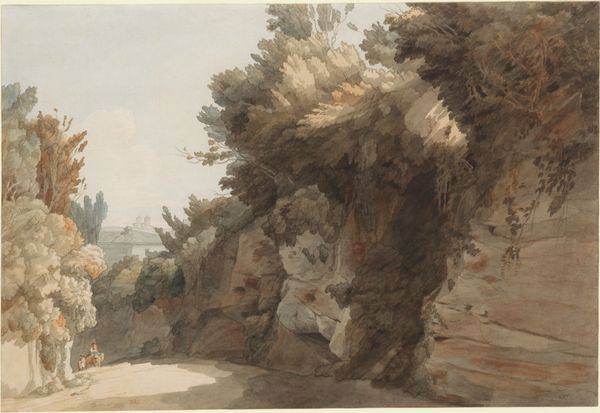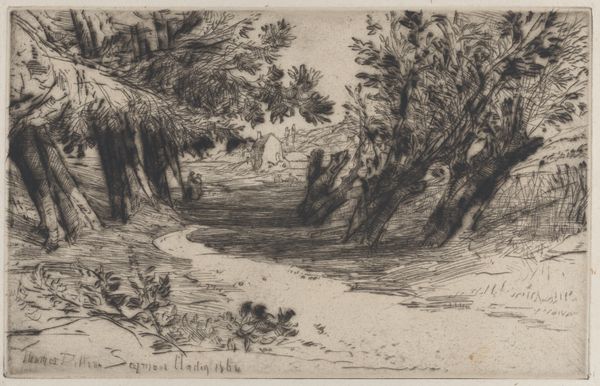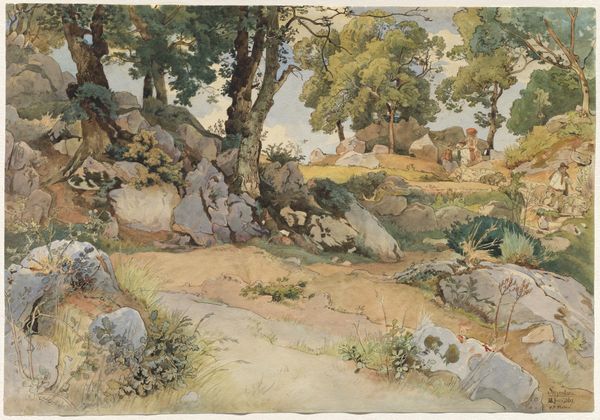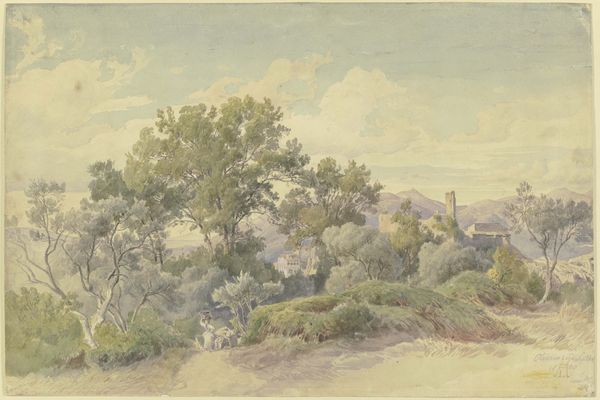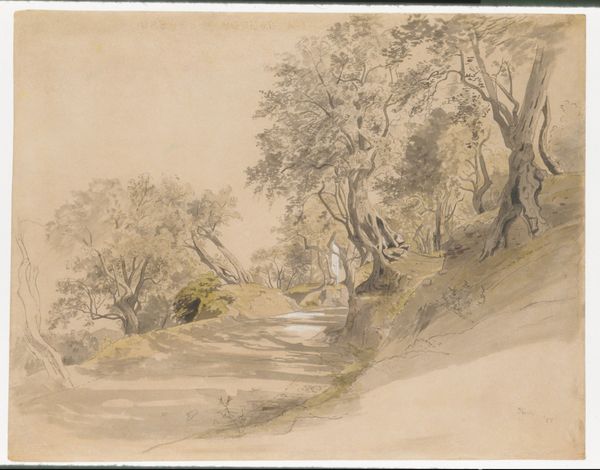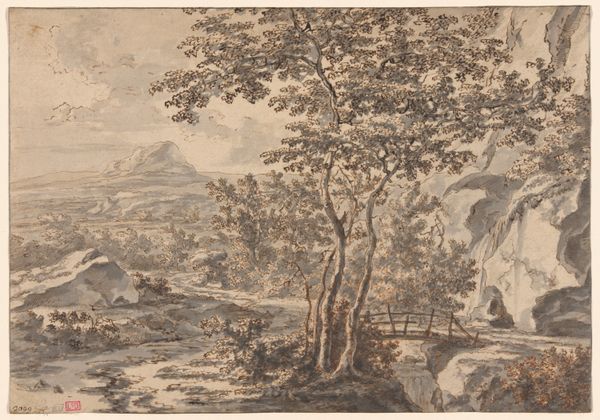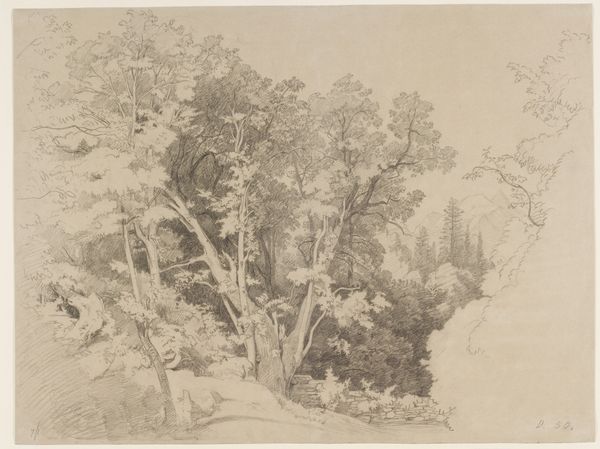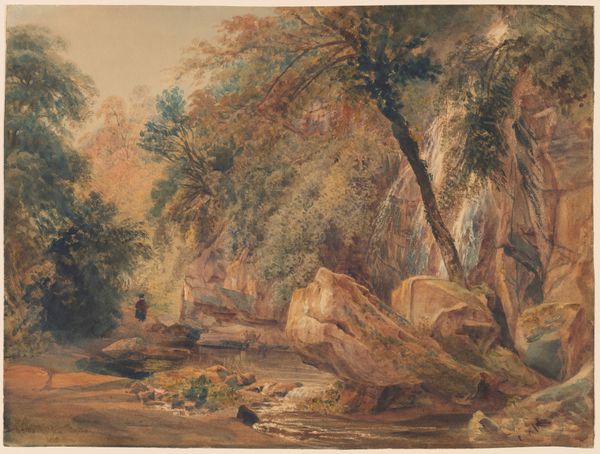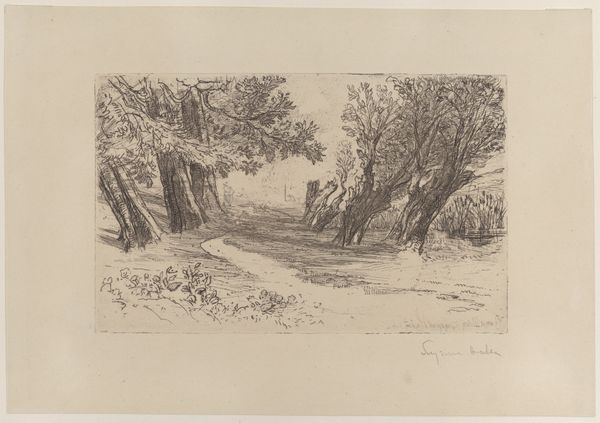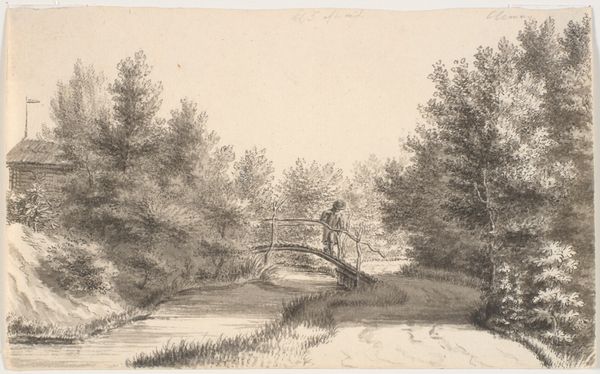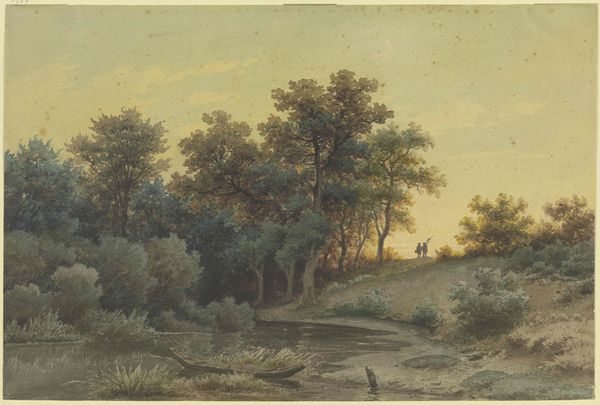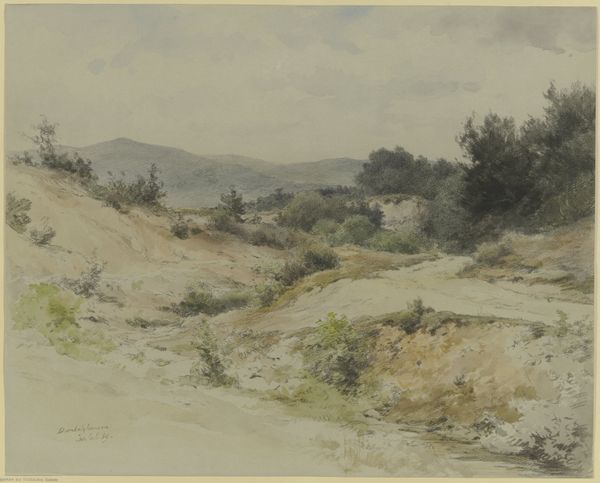
drawing, plein-air, watercolor
#
drawing
#
plein-air
#
landscape
#
watercolor
#
romanticism
#
botanical drawing
#
botanical art
#
watercolor
Dimensions: 295 mm (height) x 451 mm (width) (bladmaal)
Curator: Here we have Johan Thomas Lundbye's "Stengaerde med et aabent led," which translates to "Stone fence with an open gate," a watercolor and drawing completed en plein-air in 1847. Editor: The palette feels restrained, almost melancholic. I’m struck by the fence; it looks more like the ruin of a barrier than a welcoming gateway. There’s an abandonment to the scene that pulls me in. Curator: The “open gate” could be read as a symbol of possibility or perhaps even the transient nature of life, aligning with the romantic era's emphasis on emotion and individual experience. His choice to depict the everyday, the local, is also significant in understanding Danish identity in this period. Editor: It also speaks to Lundbye's process; plein-air drawing is an incredibly embodied practice. What was it like to haul your materials to this rural location? How does that physicality influence the finished work, this light wash of color representing the world? It gives you pause about accessibility in landscape. Who owns this landscape? Who has the leisure to document this gate? Curator: I understand that point. We have to consider the labor that affords Lundbye to produce this piece; without the servant, wife, mother who afforded him food and a clean studio. The material accessibility is just as crucial to explore. Editor: It leads me to wonder about the craftsmanship evident. Lundbye isn't merely replicating what he sees but actively constructs the image through his technique, carefully building layers and leaving space for the whiteness of the paper to suggest light and air. It's not just about recording the landscape, but crafting an idea *of* the landscape. How does this idea support a national feeling for Danish peoples? Curator: The role of art, and specifically landscape painting, was deeply intertwined with the formation of national identity during this era. Landscapes provided visual representations of a shared cultural heritage, emphasizing the beauty and uniqueness of the Danish countryside. The location that Lundbye selected served as an artistic act to encourage citizens that this small landscape of humble resources deserves respect. Editor: I think I walked into the analysis thinking about materials and came out thinking much more about what landscapes means when shared amongst cultural lines. How are memories built through what art gives us? Curator: It highlights that art is more than the art historical analysis of its impact, it has to be actively interpreted across contexts to achieve the highest appreciation of meaning and worth.
Comments
No comments
Be the first to comment and join the conversation on the ultimate creative platform.
